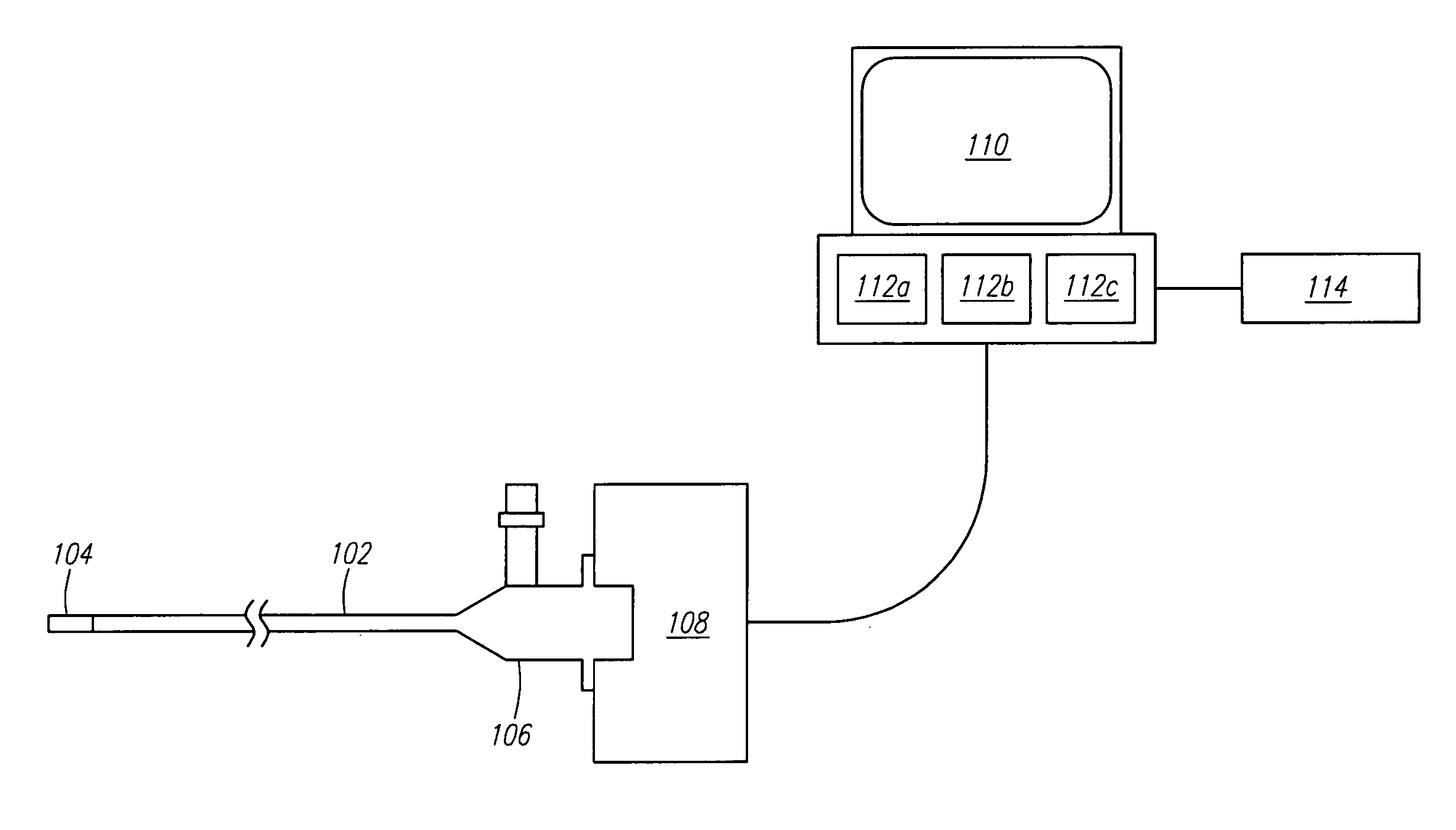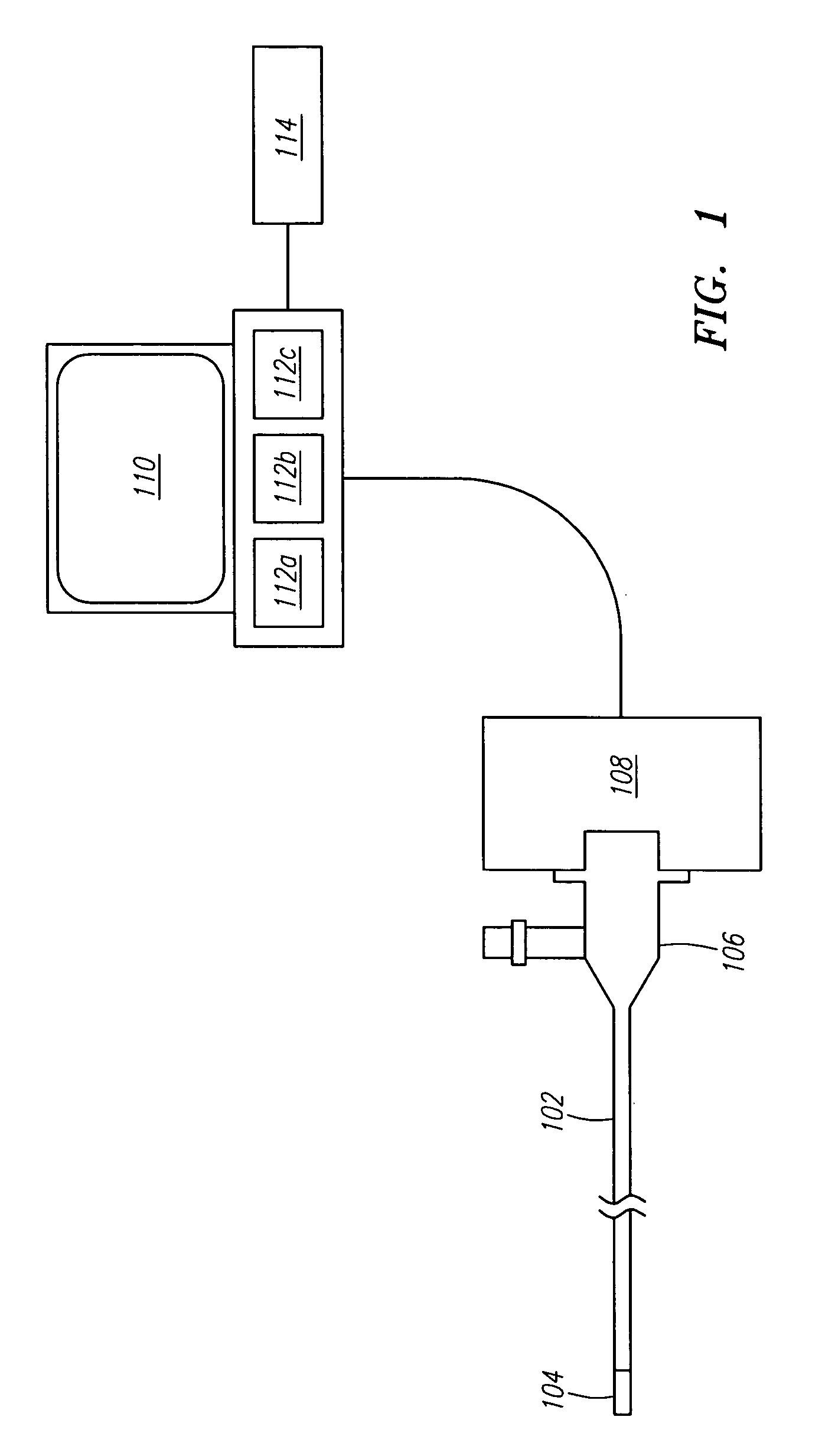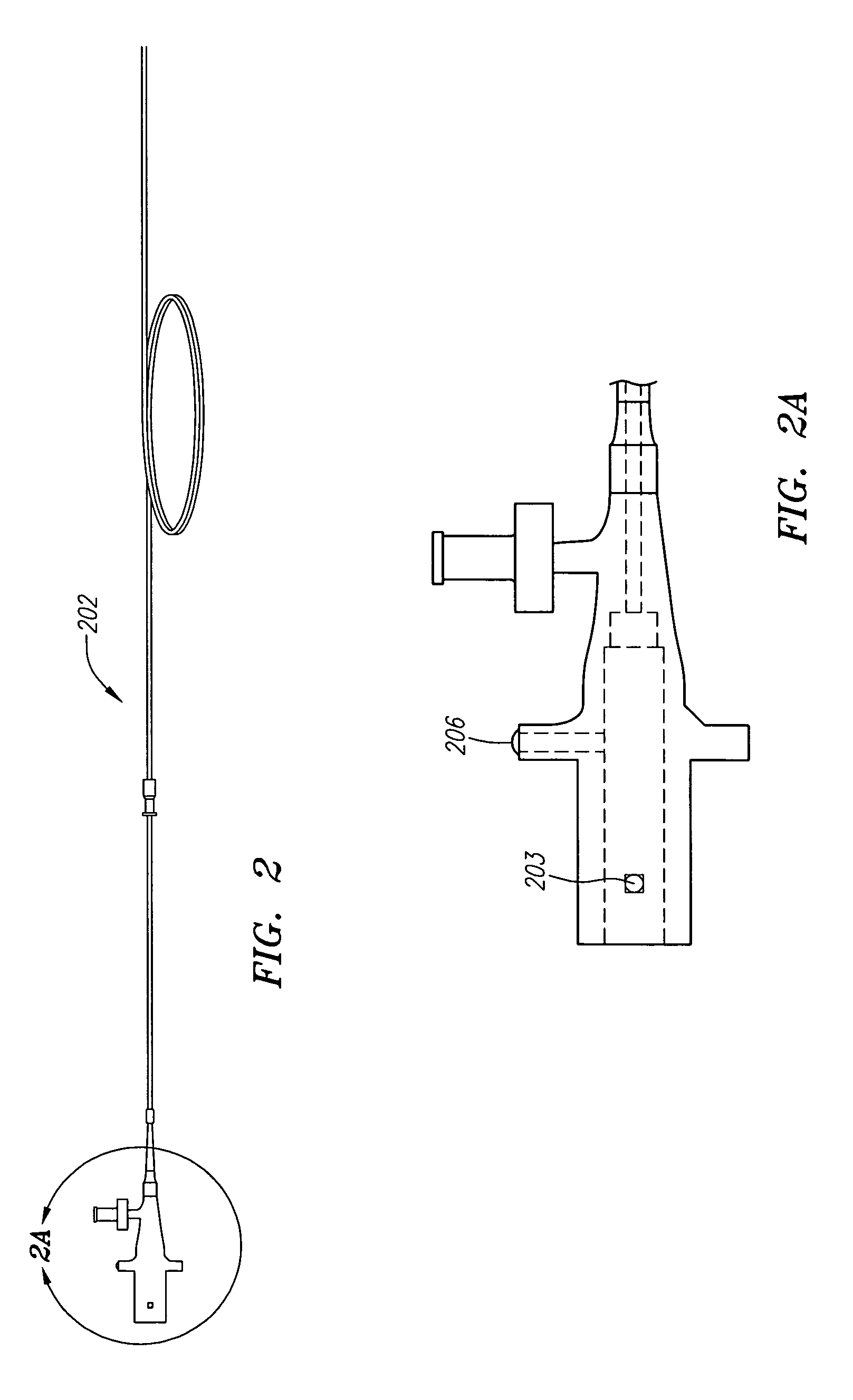Apparatus and method for use of RFID catheter intelligence
- Summary
- Abstract
- Description
- Claims
- Application Information
AI Technical Summary
Benefits of technology
Problems solved by technology
Method used
Image
Examples
Embodiment Construction
[0024]FIG. 1 is a block diagram showing an embodiment of a system for characterizing vascular tissue data. The system generally comprises a catheter 102, having an imaging element 104 operably connected at the distal end, connected to an interface device 108 which is then connected to an operation console 110. When the catheter 102 is connected to the interface device 108, the interface device 108 is triggered and begins reading catheter information stored on a memory device, for example an EPROM, an RFID chip or other suitable memory device, located on the catheter 102. The catheter 102 relays information about the imaging element 104 to the interface device 108. At a minimum, the catheter may communicate the type of imaging element, for example phased array ultrasonic transducers or rotational ultrasonic transducers, and operating frequency of the imaging element. However, the catheter may also relay additional information regarding specific catheter identification and / or perform...
PUM
 Login to View More
Login to View More Abstract
Description
Claims
Application Information
 Login to View More
Login to View More - R&D
- Intellectual Property
- Life Sciences
- Materials
- Tech Scout
- Unparalleled Data Quality
- Higher Quality Content
- 60% Fewer Hallucinations
Browse by: Latest US Patents, China's latest patents, Technical Efficacy Thesaurus, Application Domain, Technology Topic, Popular Technical Reports.
© 2025 PatSnap. All rights reserved.Legal|Privacy policy|Modern Slavery Act Transparency Statement|Sitemap|About US| Contact US: help@patsnap.com



